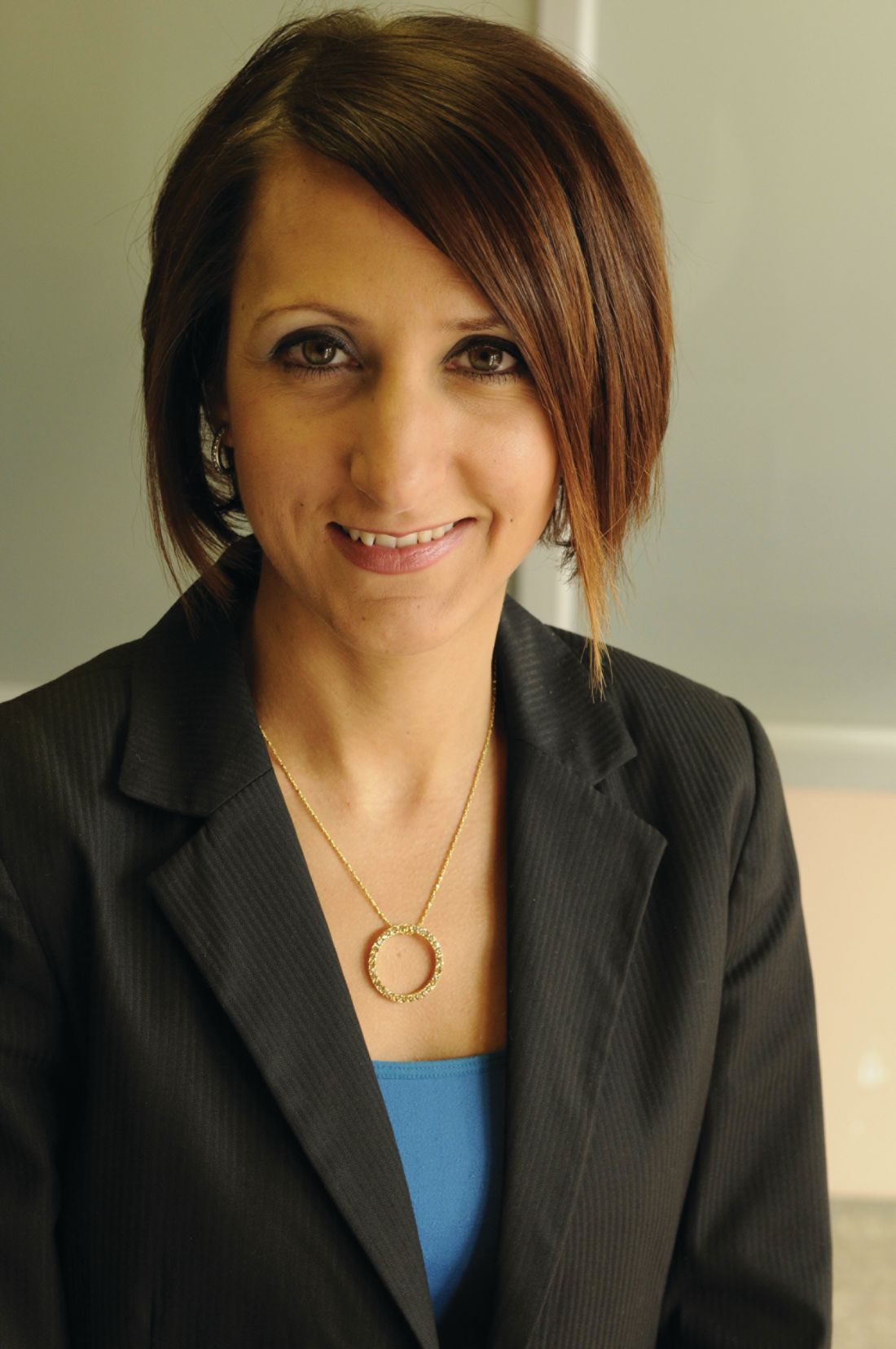User login
VANCOUVER – Interdisciplinary care for women with deep dyspareunia led to a reduction in severe cases, but had no effect on superficial dyspareunia, a study showed.
The findings were measured after 1 year in a treatment program that included laparoscopic surgery, hormonal suppression, biofeedback, pelvic floor physiotherapy, cognitive-behavioral therapy, and mindfulness-based therapy.
About half of women with endometriosis experience deep dyspareunia, which can have a strong, negative impact on quality of life and relationships, Paul Yong, MD, PhD, reported at the World Congress on Endometriosis. For women who do not respond to surgical or medical interventions, interdisciplinary approaches that address the biopsychosocial aspect of pain in endometriosis could be of benefit, he said.
He said the researchers didn’t expect the superficial dyspareunia to respond to the treatments, since it is likely tied to nerve issues. But as a secondary measure, superficial dyspareunia acted as a sort of built-in control to show that the interventions were not having a broad placebo or nonspecific effect on pain.
The study included 296 women who came to the BC Women’s Hospital Centre for Pelvic Pain and Endometriosis with complaints of deep dyspareunia between December 2013 and December 2014. In total, 58% had a confirmed diagnosis of endometriosis, 24% had suspected endometriosis, and 18% had no endometriosis. More than half of the women had irritable bowel syndrome, 42% had painful bladder syndrome, and 30% had pelvic floor dysfunction.
About 55% of patients underwent surgery, while 13% were on hormonal treatment at both baseline and 1 year, 11% were on a pain adjuvant, 30% were on opioids, and 17% were enrolled in a pain program.
At baseline, half of the women reported severe symptoms of deep dyspareunia, but that percentage dropped to 30.4% at 1 year. Moderate cases increased from 17.7% at baseline to 25.0% at 1 year, and mild cases increased from 27.3% to 44.6% (P less than .0001).
A secondary analysis of patients with superficial dyspareunia showed no statistically significant changes in category frequencies. Severe cases represented 22.4% of the population at baseline and 20.2% at 1 year, and similarities were also seen in proportions of moderate (20.2% vs. 19.8%) and mild cases (57.4% vs. 60.1%, P = .65).
“This really suggests that the treatment program has some specificity for deep dyspareunia,” Dr. Yong said.
Depressive symptoms at baseline, as assessed by the Patient Health Questionnaire–9 scale, predicted deep dyspareunia at 1 year (odds ratio, 1.07; 95% confidence interval, 1.03-1.11).
The efficacy against deep dyspareunia is encouraging, but superficial dyspareunia is also a key concern.
“The study suggests that the typical treatments for endometriosis may not impact at all this really prevalent issue of superficial pain, so there’s more for us to do there because that can be a cause of long-term suffering and decreased quality of life,” said Lori Brotto, PhD, director of the sexual health laboratory at the University of British Columbia, who moderated the session during which the research was presented.
Dr. Yong called for more research, specifically a trial targeting treatment of depressive symptoms to determine any effect on endometriosis-related sexual pain or function.
“I think there needs to be more work in the role of depression – not only screening for depression in women with endometriosis, but trying to understand what role it plays in endometriosis symptoms,” Dr. Yong said.
The study was funded by the Canadian Institutes of Health Research. Dr. Yong and Dr. Brotto reported having no relevant financial disclosures.
VANCOUVER – Interdisciplinary care for women with deep dyspareunia led to a reduction in severe cases, but had no effect on superficial dyspareunia, a study showed.
The findings were measured after 1 year in a treatment program that included laparoscopic surgery, hormonal suppression, biofeedback, pelvic floor physiotherapy, cognitive-behavioral therapy, and mindfulness-based therapy.
About half of women with endometriosis experience deep dyspareunia, which can have a strong, negative impact on quality of life and relationships, Paul Yong, MD, PhD, reported at the World Congress on Endometriosis. For women who do not respond to surgical or medical interventions, interdisciplinary approaches that address the biopsychosocial aspect of pain in endometriosis could be of benefit, he said.
He said the researchers didn’t expect the superficial dyspareunia to respond to the treatments, since it is likely tied to nerve issues. But as a secondary measure, superficial dyspareunia acted as a sort of built-in control to show that the interventions were not having a broad placebo or nonspecific effect on pain.
The study included 296 women who came to the BC Women’s Hospital Centre for Pelvic Pain and Endometriosis with complaints of deep dyspareunia between December 2013 and December 2014. In total, 58% had a confirmed diagnosis of endometriosis, 24% had suspected endometriosis, and 18% had no endometriosis. More than half of the women had irritable bowel syndrome, 42% had painful bladder syndrome, and 30% had pelvic floor dysfunction.
About 55% of patients underwent surgery, while 13% were on hormonal treatment at both baseline and 1 year, 11% were on a pain adjuvant, 30% were on opioids, and 17% were enrolled in a pain program.
At baseline, half of the women reported severe symptoms of deep dyspareunia, but that percentage dropped to 30.4% at 1 year. Moderate cases increased from 17.7% at baseline to 25.0% at 1 year, and mild cases increased from 27.3% to 44.6% (P less than .0001).
A secondary analysis of patients with superficial dyspareunia showed no statistically significant changes in category frequencies. Severe cases represented 22.4% of the population at baseline and 20.2% at 1 year, and similarities were also seen in proportions of moderate (20.2% vs. 19.8%) and mild cases (57.4% vs. 60.1%, P = .65).
“This really suggests that the treatment program has some specificity for deep dyspareunia,” Dr. Yong said.
Depressive symptoms at baseline, as assessed by the Patient Health Questionnaire–9 scale, predicted deep dyspareunia at 1 year (odds ratio, 1.07; 95% confidence interval, 1.03-1.11).
The efficacy against deep dyspareunia is encouraging, but superficial dyspareunia is also a key concern.
“The study suggests that the typical treatments for endometriosis may not impact at all this really prevalent issue of superficial pain, so there’s more for us to do there because that can be a cause of long-term suffering and decreased quality of life,” said Lori Brotto, PhD, director of the sexual health laboratory at the University of British Columbia, who moderated the session during which the research was presented.
Dr. Yong called for more research, specifically a trial targeting treatment of depressive symptoms to determine any effect on endometriosis-related sexual pain or function.
“I think there needs to be more work in the role of depression – not only screening for depression in women with endometriosis, but trying to understand what role it plays in endometriosis symptoms,” Dr. Yong said.
The study was funded by the Canadian Institutes of Health Research. Dr. Yong and Dr. Brotto reported having no relevant financial disclosures.
VANCOUVER – Interdisciplinary care for women with deep dyspareunia led to a reduction in severe cases, but had no effect on superficial dyspareunia, a study showed.
The findings were measured after 1 year in a treatment program that included laparoscopic surgery, hormonal suppression, biofeedback, pelvic floor physiotherapy, cognitive-behavioral therapy, and mindfulness-based therapy.
About half of women with endometriosis experience deep dyspareunia, which can have a strong, negative impact on quality of life and relationships, Paul Yong, MD, PhD, reported at the World Congress on Endometriosis. For women who do not respond to surgical or medical interventions, interdisciplinary approaches that address the biopsychosocial aspect of pain in endometriosis could be of benefit, he said.
He said the researchers didn’t expect the superficial dyspareunia to respond to the treatments, since it is likely tied to nerve issues. But as a secondary measure, superficial dyspareunia acted as a sort of built-in control to show that the interventions were not having a broad placebo or nonspecific effect on pain.
The study included 296 women who came to the BC Women’s Hospital Centre for Pelvic Pain and Endometriosis with complaints of deep dyspareunia between December 2013 and December 2014. In total, 58% had a confirmed diagnosis of endometriosis, 24% had suspected endometriosis, and 18% had no endometriosis. More than half of the women had irritable bowel syndrome, 42% had painful bladder syndrome, and 30% had pelvic floor dysfunction.
About 55% of patients underwent surgery, while 13% were on hormonal treatment at both baseline and 1 year, 11% were on a pain adjuvant, 30% were on opioids, and 17% were enrolled in a pain program.
At baseline, half of the women reported severe symptoms of deep dyspareunia, but that percentage dropped to 30.4% at 1 year. Moderate cases increased from 17.7% at baseline to 25.0% at 1 year, and mild cases increased from 27.3% to 44.6% (P less than .0001).
A secondary analysis of patients with superficial dyspareunia showed no statistically significant changes in category frequencies. Severe cases represented 22.4% of the population at baseline and 20.2% at 1 year, and similarities were also seen in proportions of moderate (20.2% vs. 19.8%) and mild cases (57.4% vs. 60.1%, P = .65).
“This really suggests that the treatment program has some specificity for deep dyspareunia,” Dr. Yong said.
Depressive symptoms at baseline, as assessed by the Patient Health Questionnaire–9 scale, predicted deep dyspareunia at 1 year (odds ratio, 1.07; 95% confidence interval, 1.03-1.11).
The efficacy against deep dyspareunia is encouraging, but superficial dyspareunia is also a key concern.
“The study suggests that the typical treatments for endometriosis may not impact at all this really prevalent issue of superficial pain, so there’s more for us to do there because that can be a cause of long-term suffering and decreased quality of life,” said Lori Brotto, PhD, director of the sexual health laboratory at the University of British Columbia, who moderated the session during which the research was presented.
Dr. Yong called for more research, specifically a trial targeting treatment of depressive symptoms to determine any effect on endometriosis-related sexual pain or function.
“I think there needs to be more work in the role of depression – not only screening for depression in women with endometriosis, but trying to understand what role it plays in endometriosis symptoms,” Dr. Yong said.
The study was funded by the Canadian Institutes of Health Research. Dr. Yong and Dr. Brotto reported having no relevant financial disclosures.
AT WCE 2017
Key clinical point:
Major finding: Severe cases of deep dyspareunia dropped from 50.0% to 30.4% at 1 year.
Data source: A retrospective analysis of 296 patients at a single center.
Disclosures: The study was funded by the Canadian Institutes of Health Research. Dr. Yong and Dr. Brotto reported having no relevant financial disclosures.

